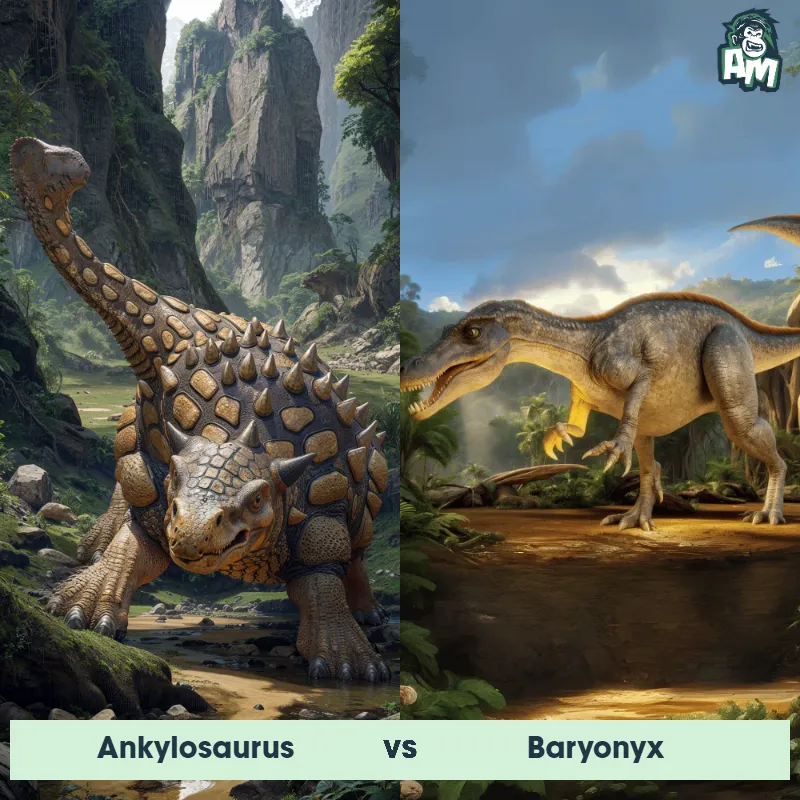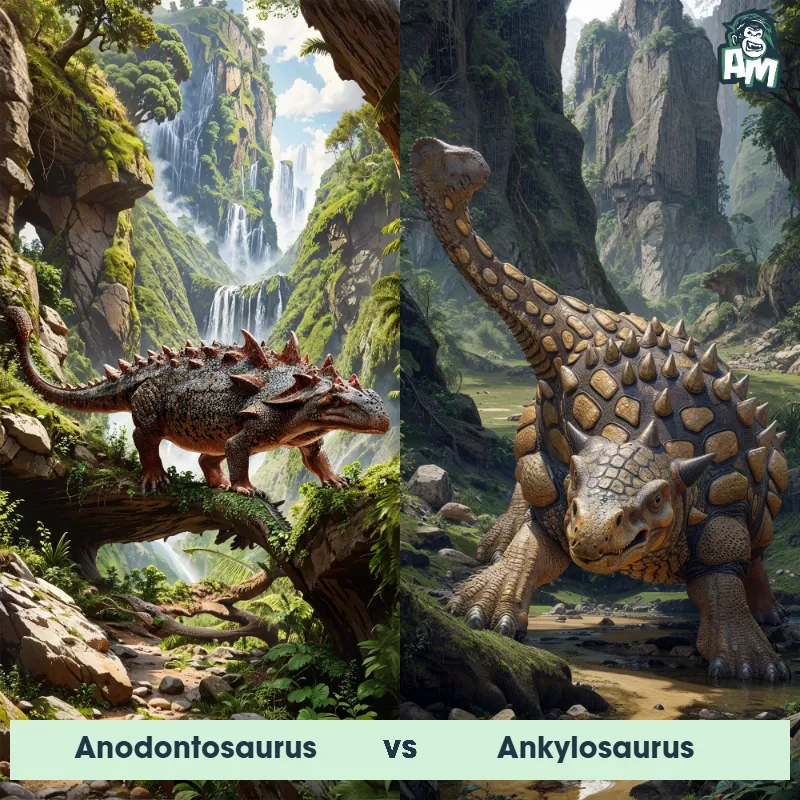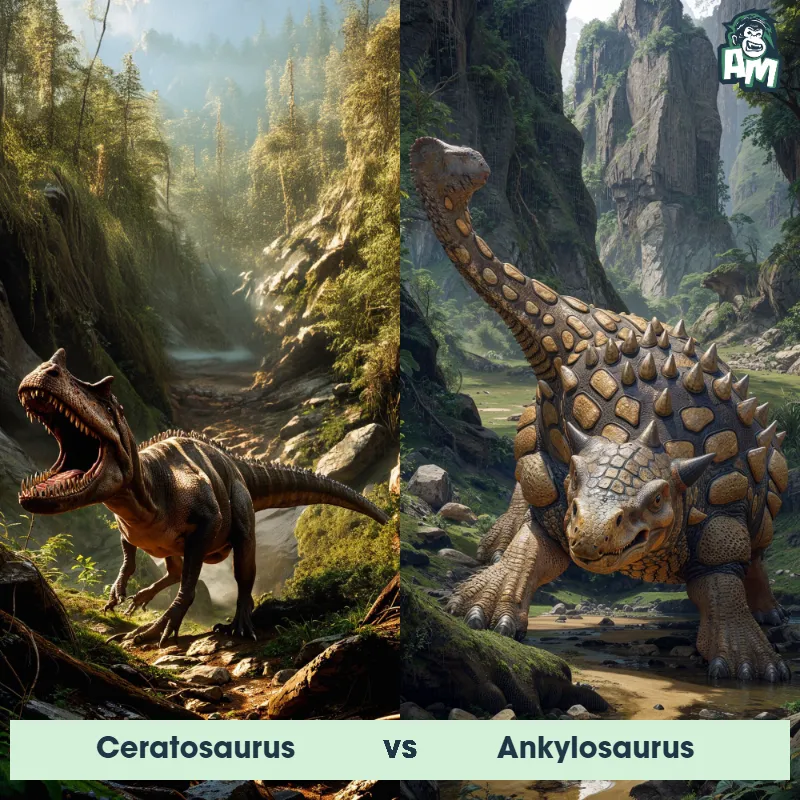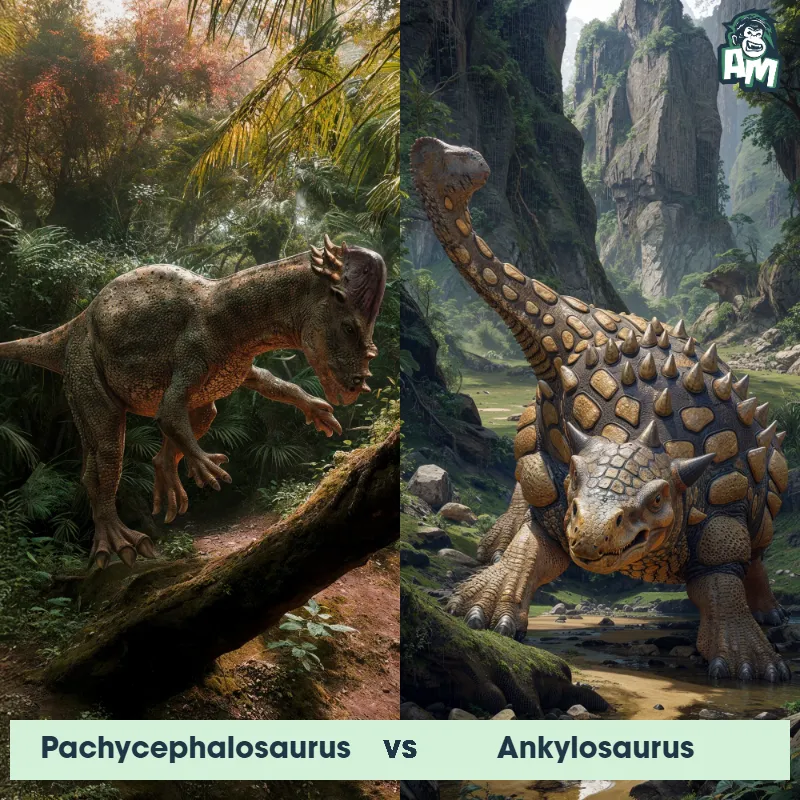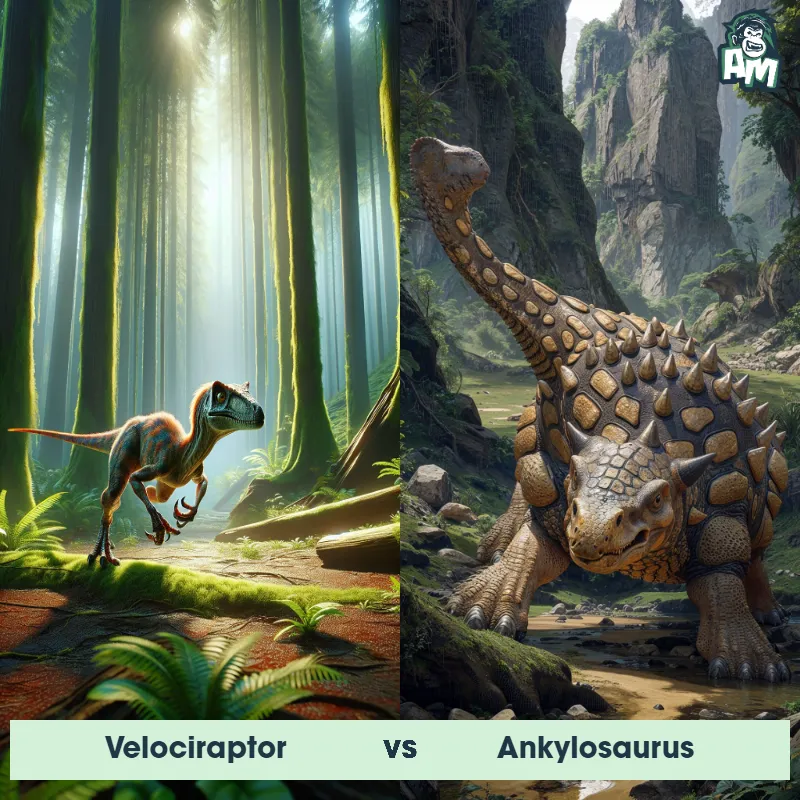The Ankylosaurus
The Ankylosaurus is a herbivorous dinosaur known for its heavily armored body and clubbed tail, measuring up to 30 feet in length and weighing around 6,000 kg. It had a wide, low-slung body covered in bony plates called osteoderms, with a row of spikes along its sides for protection. Its skull featured a distinctive armored plate and a beak for grazing on plants.
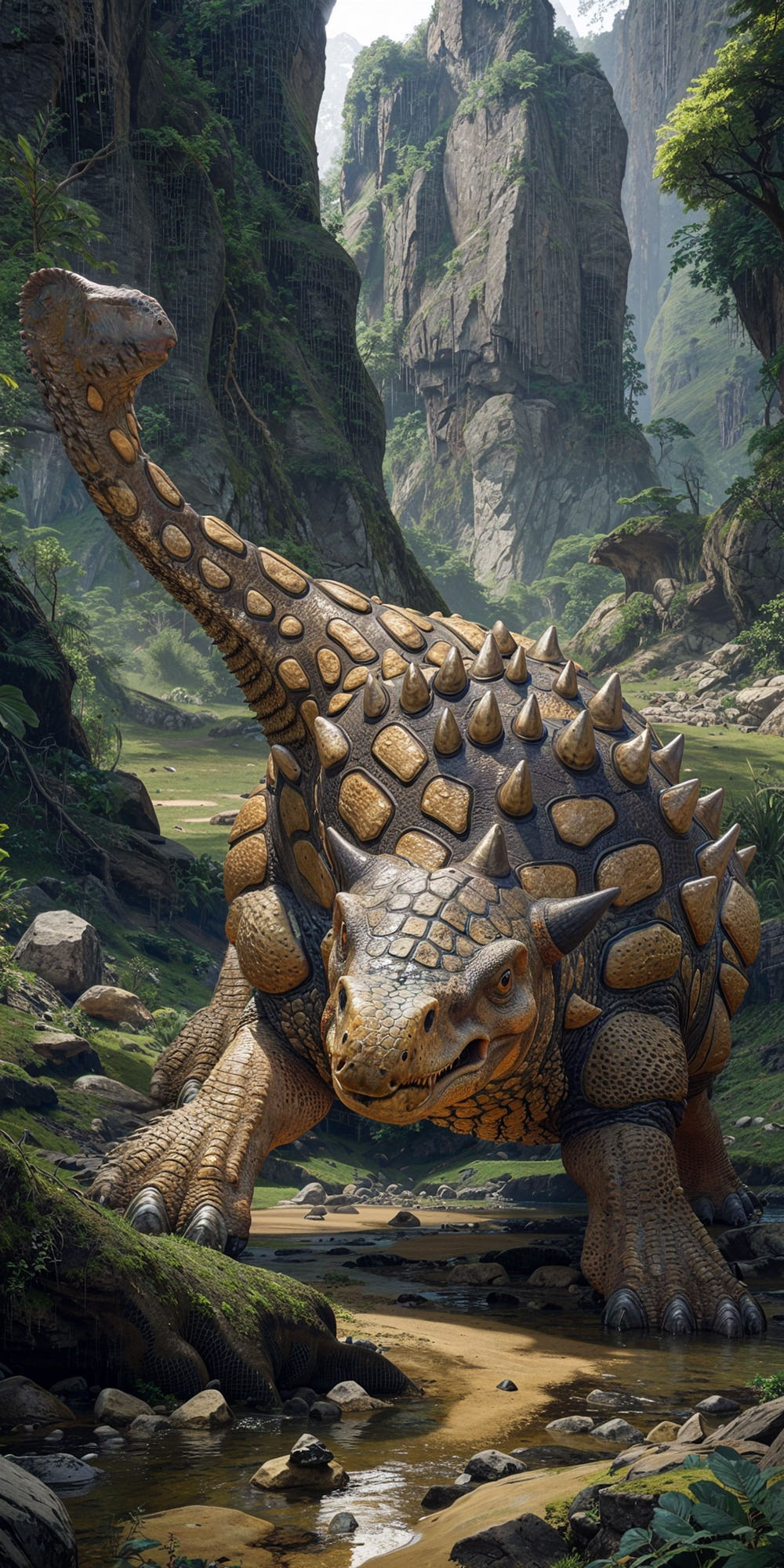
| Ankylosaurus | |
|---|---|
| Size | 20 feet long (6 meters) |
| Weight | 6,000 pounds (2,700 kilograms) |
| Speed | 6-7 mph (10-11 km/h) |
| Key Strength | Tail club for defensive purposes |
| Biggest Weakness | Slow movement due to massive size |
| Scientific Name | Ankylosaurus magniventris |
| Family | Ankylosauridae |
| Habitat | Woodlands and open plains |
| Geography | North America |
| Diet | Herbivore - fed on low-lying vegetation |
| Lifespan | 70 years - 75 years |

The Ankylosaurus
The Ankylosaurus is a herbivorous dinosaur known for its heavily armored body and clubbed tail, measuring up to 30 feet in length and weighing around 6,000 kg. It had a wide, low-slung body covered in bony plates called osteoderms, with a row of spikes along its sides for protection. Its skull featured a distinctive armored plate and a beak for grazing on plants.
Fun Fact: Ankylosaurus had a swinging club at the end of its tail that could deliver devastating blows to predators like T. rex.
| Ankylosaurus | |
|---|---|
| Size | 20 feet long (6 meters) |
| Weight | 6,000 pounds (2,700 kilograms) |
| Speed | 6-7 mph (10-11 km/h) |
| Key Strength | Tail club for defensive purposes |
| Biggest Weakness | Slow movement due to massive size |
| Scientific Name | Ankylosaurus magniventris |
| Family | Ankylosauridae |
| Habitat | Woodlands and open plains |
| Geography | North America |
| Diet | Herbivore - fed on low-lying vegetation |
| Lifespan | 70 years - 75 years |
Ankylosaurus Matchups
We use AI to simulate matchups between the Ankylosaurus and other animals. Our simulation considers size, strength, and natural predatory behaviors to determine the most likely outcome.
Ankylosaurus: Diet, Predators, Aggression, and Defensive Behaviors
What did Ankylosaurus eat?
Ankylosaurus were herbivores, meaning they primarily ate plants. They had a specialized diet consisting of low-lying vegetation such as ferns, cycads, and other types of plants that were abundant during the Cretaceous period.
Did Ankylosaurus have any predators?
While Ankylosaurus were large and formidable herbivores with their armored bodies and tail clubs, they did have predators such as large carnivorous dinosaurs like Tyrannosaurus rex. However, their thick armor and defensive capabilities helped deter most predators.
Were Ankylosaurus aggressive?
Ankylosaurus were not inherently aggressive dinosaurs. They were generally peaceful herbivores that preferred to avoid conflict whenever possible. However, they would defend themselves fiercely when threatened or attacked by predators.
Did Ankylosaurus fight?
Ankylosaurus did engage in combat, particularly when defending themselves or their territory. They would use their tail club as a weapon in fights, swinging it at potential threats with great force. These displays of strength were meant to intimidate adversaries and drive them away.
How did Ankylosaurus defend themselves?
Ankylosaurus had thick, bony plates covering their bodies and a heavy, club-like tail that they used as a defensive weapon. When threatened, they would swing their tail from side to side, striking any attackers with tremendous force. Their armor also provided protection against bites and other forms of attack.
What was Ankylosaurus's biggest weakness in a fight?
Despite their impressive defensive capabilities, Ankylosaurus had limited mobility due to their large size and heavy armor. This made them vulnerable to attacks from agile predators that could outmaneuver them, such as fast-moving carnivorous dinosaurs like Velociraptor. Their slow speed and inability to rapidly change direction could be exploited by more nimble adversaries.
Fun Fact: Despite its armor and defensive tactics, Ankylosaurus likely preferred to avoid conflicts and relied on its intimidating appearance to deter predators.
Fun Fact: Ankylosaurus was a slow-moving dinosaur that likely spent most of its time grazing on vegetation in Cretaceous forests.



